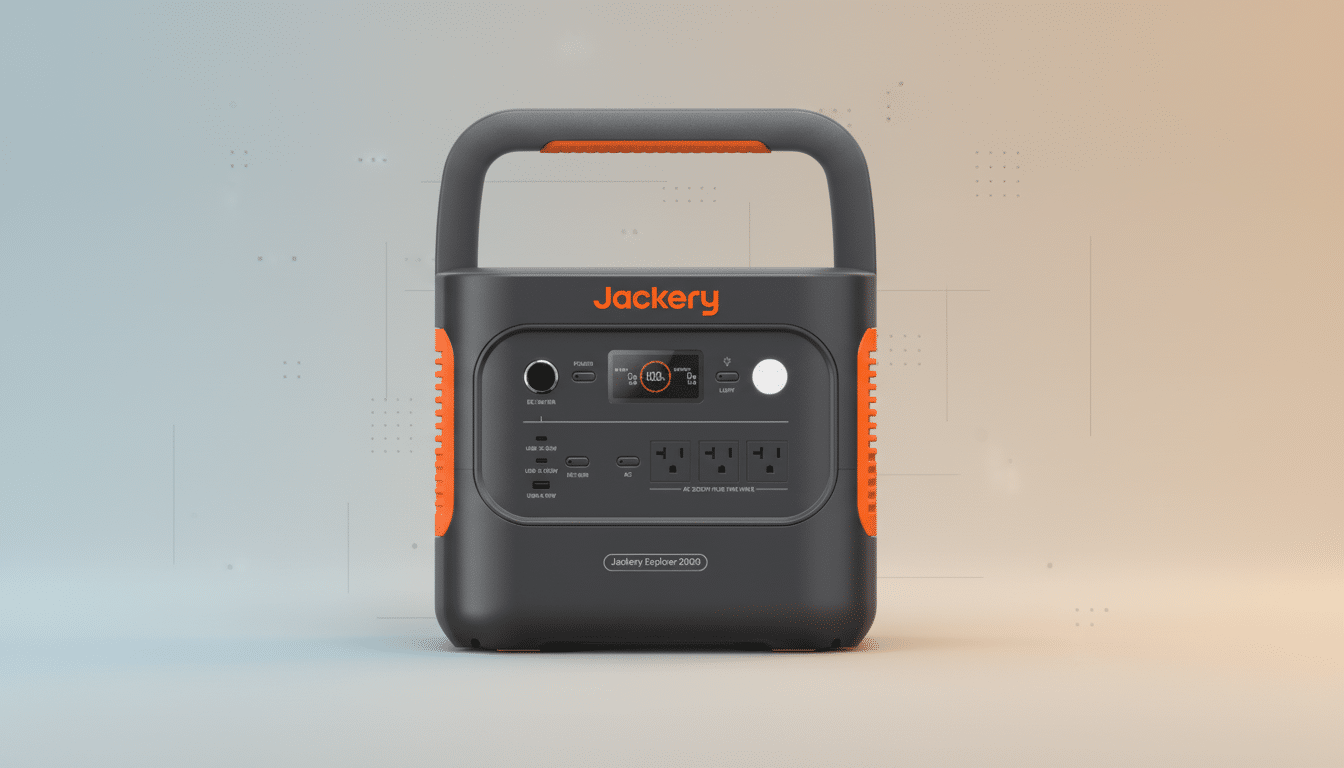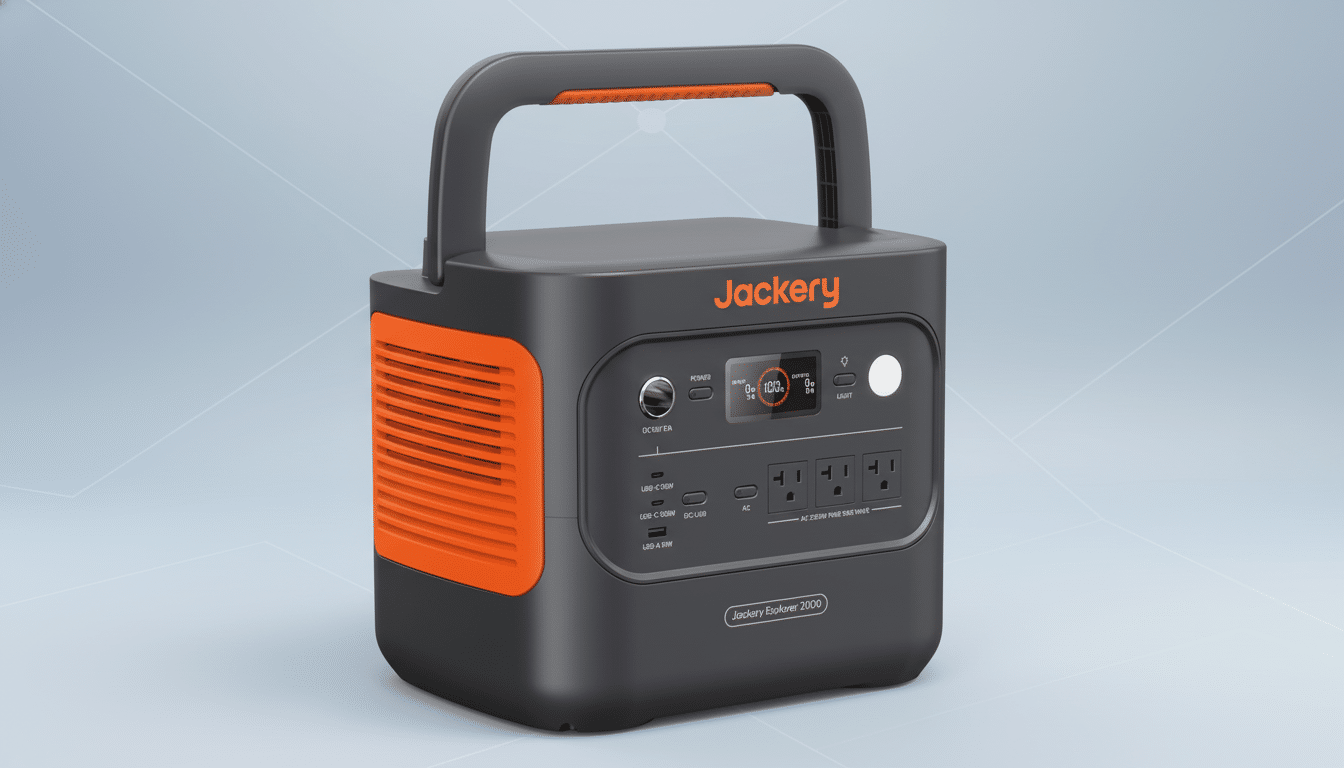The Jackery Explorer 2000 V2 just hit its all-time low at $699; that’s a massive $800 price drop from its normal $1,499 sticker. For anyone considering a high-capacity portable power station for outages, camping, or jobsite backup, this is one of the best value plays we’ve seen on such a 2 kW-class unit.
Why This Jackery Explorer 2000 V2 Deal Is So Notable
Big-capacity stations rarely drop below four figures, especially from big brands offering extensive accessory ecosystems. At $699, the Explorer 2000 V2 is priced below a lot of midrange competition, equipped with a legit 2,200 W AC inverter and fast AC recharging as well as solar readiness. For the record, market checks show similar 2 kWh stations retail for anywhere from $1,199 to $1,699 even on sale.
- Why This Jackery Explorer 2000 V2 Deal Is So Notable
- Key Specs and Charging Performance for Explorer 2000 V2
- Real-World Runtime Examples for Common Home Devices
- How It Compares in the Field Against Rival 2 kWh Units
- What to Take Notice of Before Buying the Explorer 2000 V2
- Bottom Line on the Jackery Explorer 2000 V2 Discount

Reliability matters here. The U.S. Energy Information Administration says the average American has a few hours of power outage per year, numbers that also skyrocket in regions hit by severe weather. A 2 kWh-class station can keep basic loads — like your fridge, modem, and medical devices — operational through short outages without filling your home with the irritating noise and toxic fumes of a gas generator.
Key Specs and Charging Performance for Explorer 2000 V2
The Explorer 2000 V2’s inverter is good for 2,200 W of continuous AC output spread over three outlets (it can run a full-size refrigerator, a low-heat space heater, or power tools — but not all at once). In terms of devices and fast charging, you have a 30 W USB-C port, a 100 W USB-C port, and an 18 W USB-A output that covers everything from phones to gaming laptops.
Speed is a standout. Manufacturer specs denote a 0–80% charge in approximately 66 minutes, and full recharging occurs in about 102 minutes from AC. There’s also a silent charging mode — around 30 dB — that finishes in roughly five hours if you’d prefer to top off overnight without the sound of fans. Solar users can anticipate a full charge in approximately six hours with 400 W panels in good sun, which falls in line with National Renewable Energy Laboratory estimates that real-world solar rates are contingent on weather and position.
Given its size, it’s not overly unwieldy at 39.5 pounds and folds to a compact footprint that can slip under a desk or in the trunk of a car.
That portability is a big advantage compared with gas generators, especially if you live in an apartment.
Real-World Runtime Examples for Common Home Devices
For usable power, it will be a tick less than the nameplate once you take inverter efficiency into consideration. As a practical guide, an average modern refrigerator (150 W) could run for 10–12 hours. A CPAP drawing approximately 40 W can last 35–45 hours. Decent home internet at 10–15 W could last you days. A 65-inch TV (100–150 W) could run for a full day of streaming during a blackout. These are rough figures — your actual runtime will depend on how much current your device draws, what the temperature is, and how efficient your inverter is.

And you’ll find the unit’s UPS-style features useful as well. With quick switchover, it can prevent routers, desktops, or NAS devices from dropping when the grid blinks rapidly — useful for working remotely and preserving data integrity. It’s not a true business-class UPS, but the smooth passthrough is an extremely nice bonus at this price.
How It Compares in the Field Against Rival 2 kWh Units
Rivals including EcoFlow’s Delta 2 Max and Bluetti’s AC200 series offer similar 2 kWh capacities with hefty inverters and fast charging, but often add more to the sticker price. A few adversaries employ lithium iron phosphate (LFP) batteries, usually capable of a longer cycle life. Jackery’s high-watt models have previously relied on NMC chemistry, which is lighter for the capacity and may offer fewer charge cycles. If cycle life is of particular concern, Consumer Reports advises looking at the chemistry and cycle rating as listed; they recommend taking both cycle life and warranty coverage into account when comparing stations.
Where the Explorer 2000 V2 absolutely scrapes a win is cost-to-watt ratio at today’s price point, with broad availability of cases, panels, and accessories. For those who value quick AC recharging and simple operation, it’s a great fit. For heavy daily cycling — say, off-grid cabins and other out-of-the-way spots — buyers may want to closely compare chemistry and cycle specs.
What to Take Notice of Before Buying the Explorer 2000 V2
Verify the battery chemistry and cycle life, warranty coverage (especially of its battery), and safety certifications like UL or ETL.
The inverter’s surge rating should be enough to handle your high initial-load appliances — refrigerators and compressors can take 2–3x their running wattage for a few seconds. If your intention is to utilize solar, check for connector compatibility and max solar input in order to prevent bottlenecks.
Bottom Line on the Jackery Explorer 2000 V2 Discount
Priced at the bargain rate of only $699, there’s almost no cheaper way to get into the 2 kW class than with the Jackery Explorer 2000 V2. At 2,200 W AC output, with sub-two-hour wall charging time and a range of useful port options, it’s an attractive purchase for use in emergencies, van life, or weekend projects. If you’ve been waiting to upgrade from a smaller model, it’s time.

